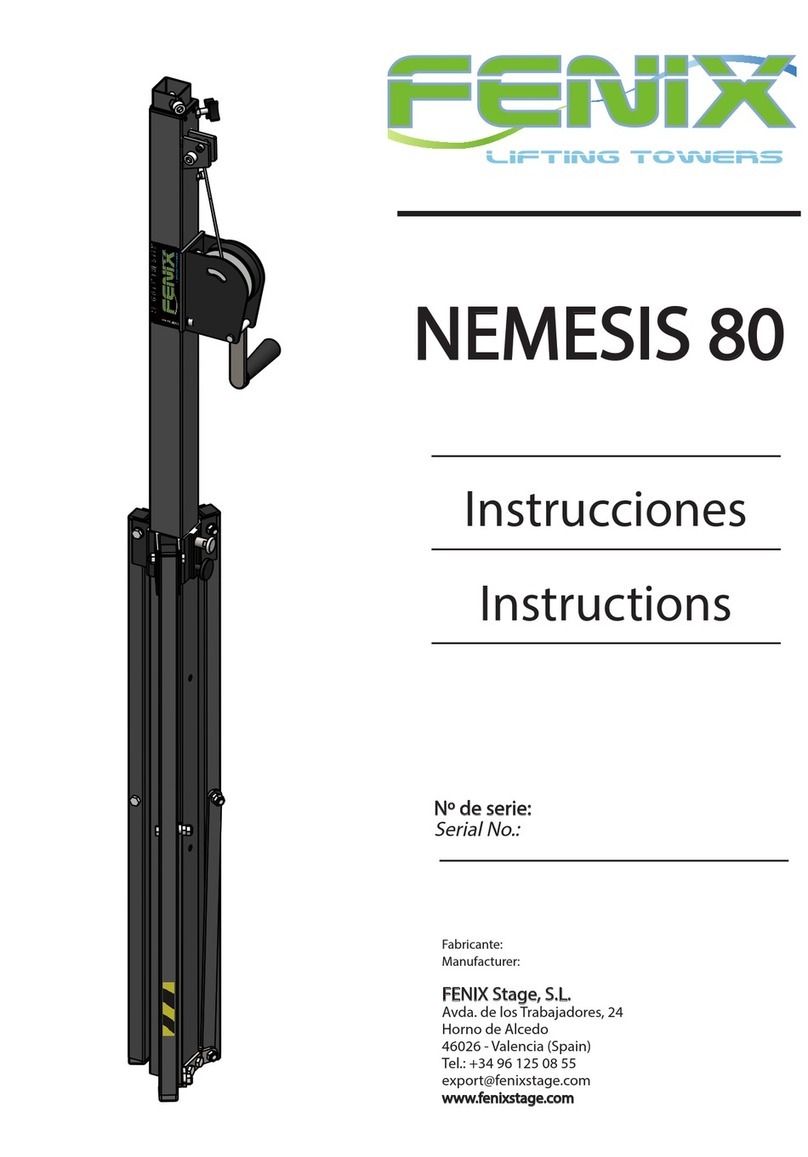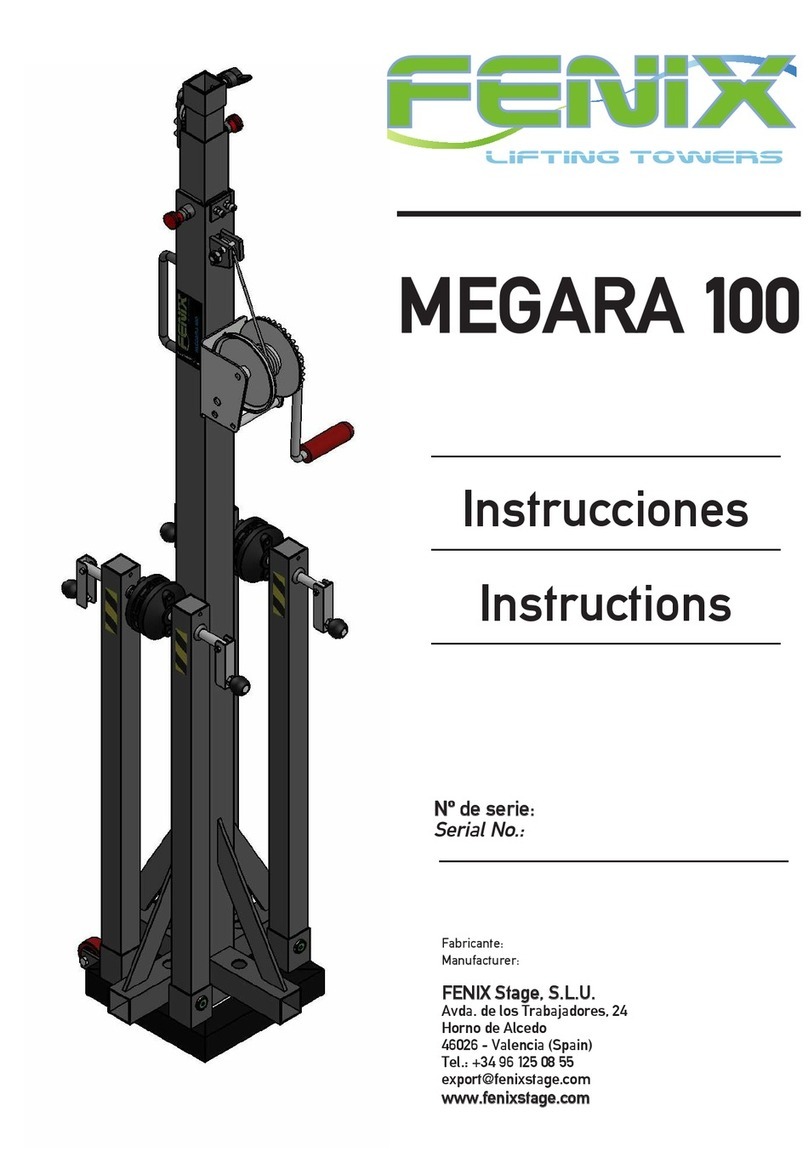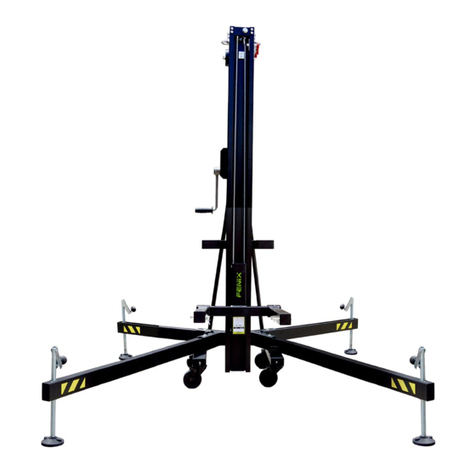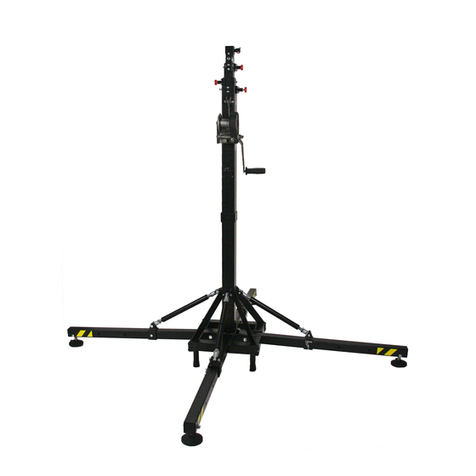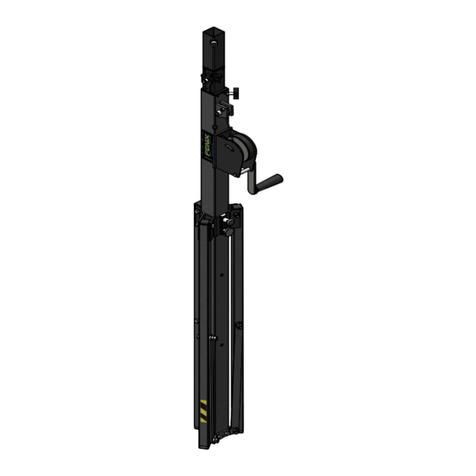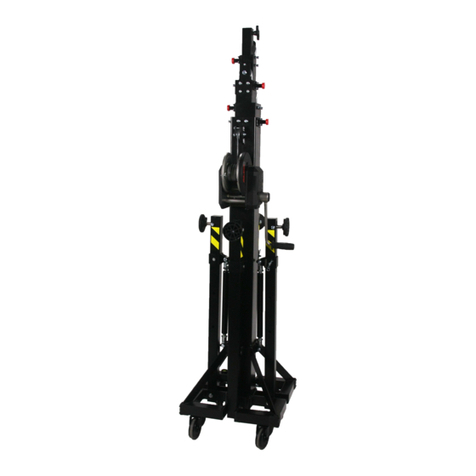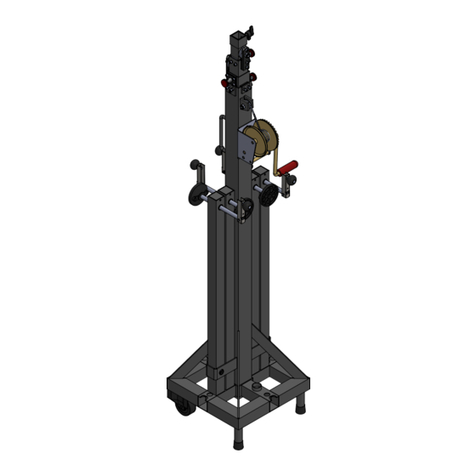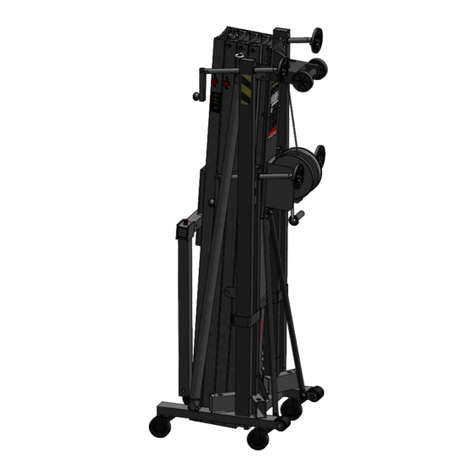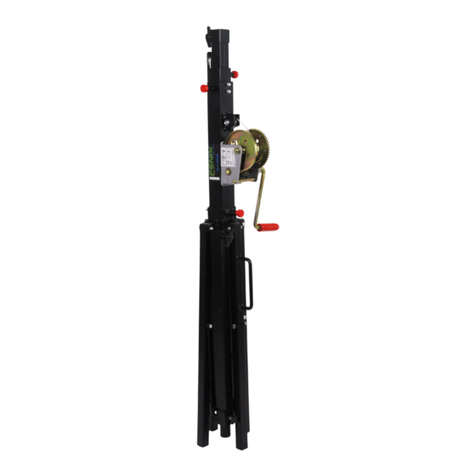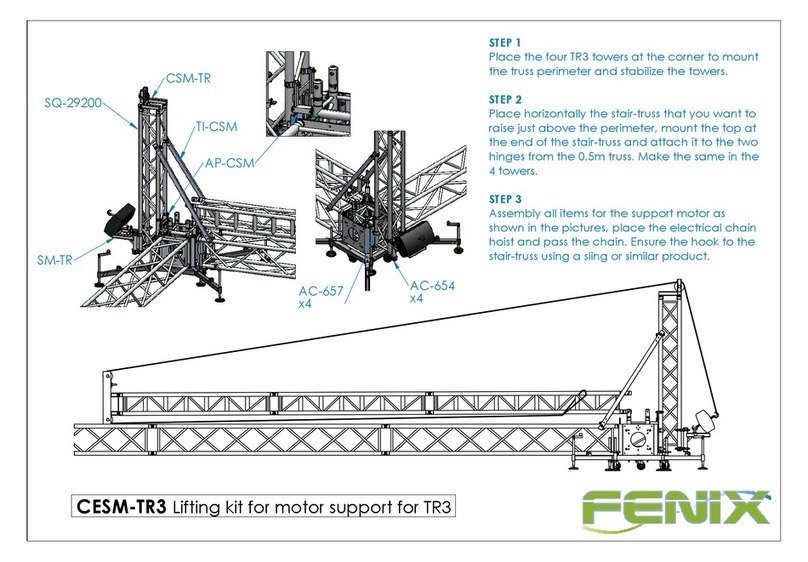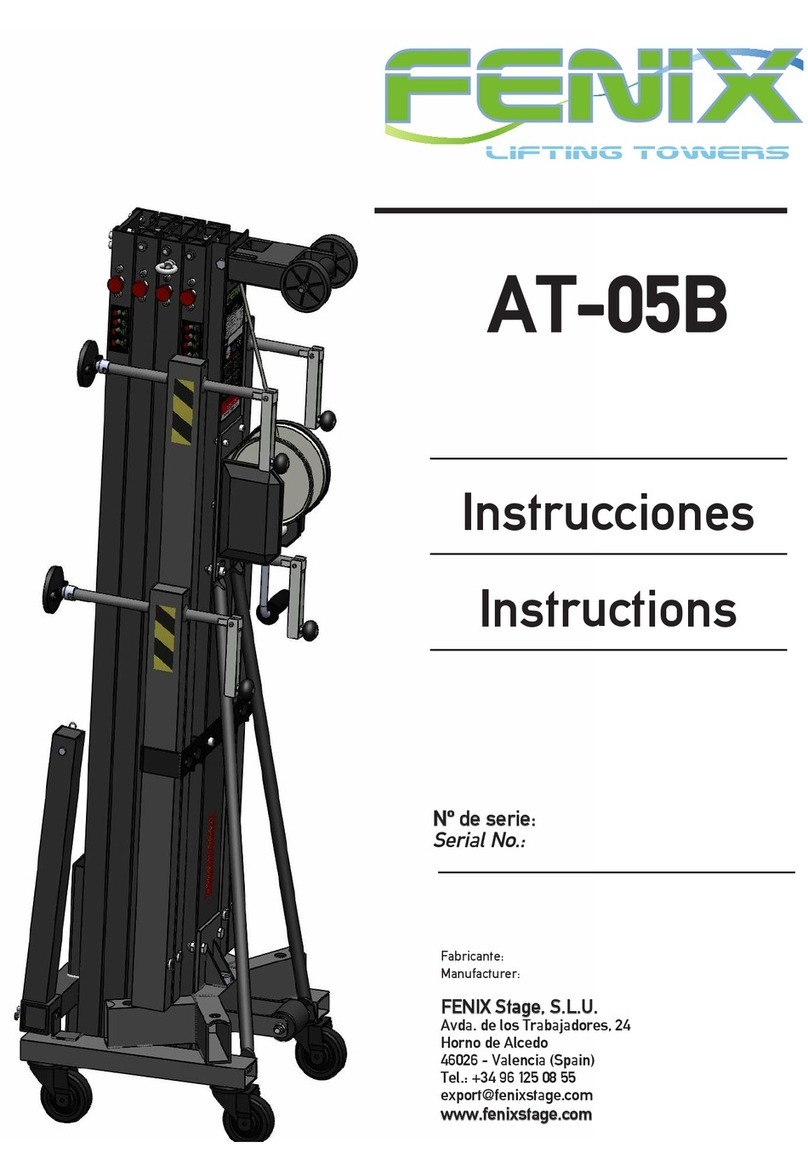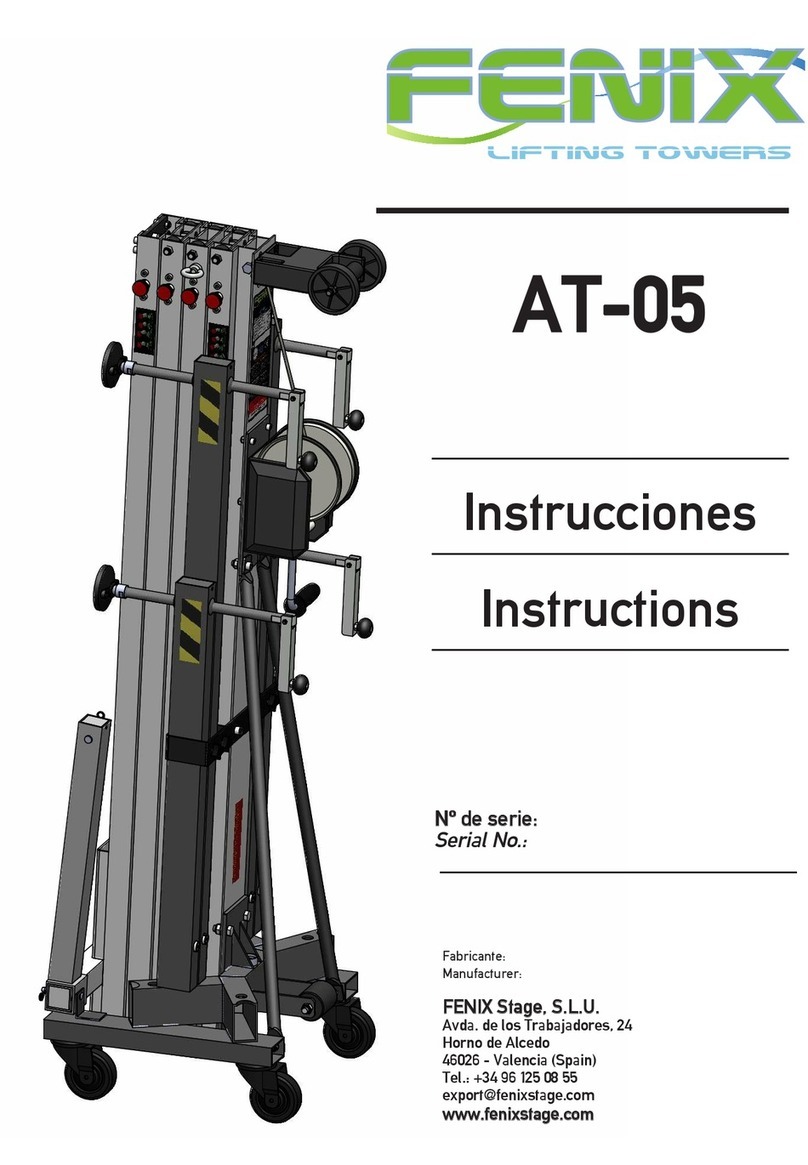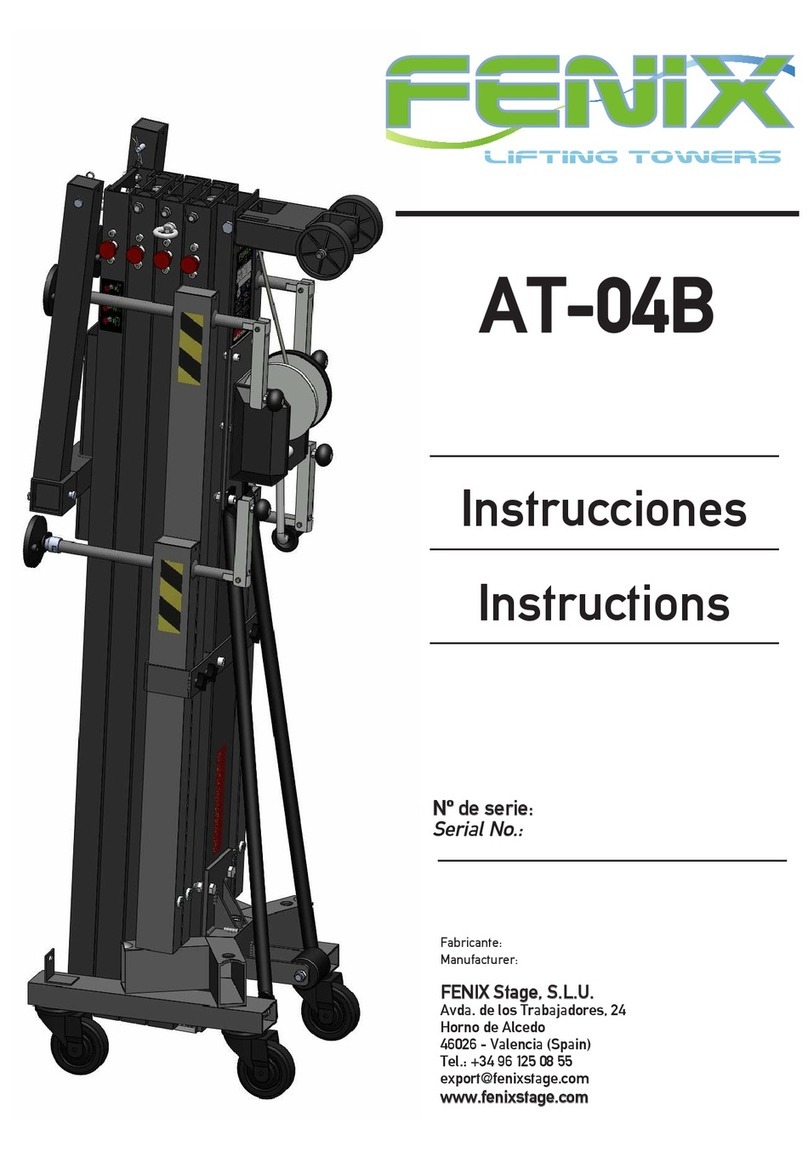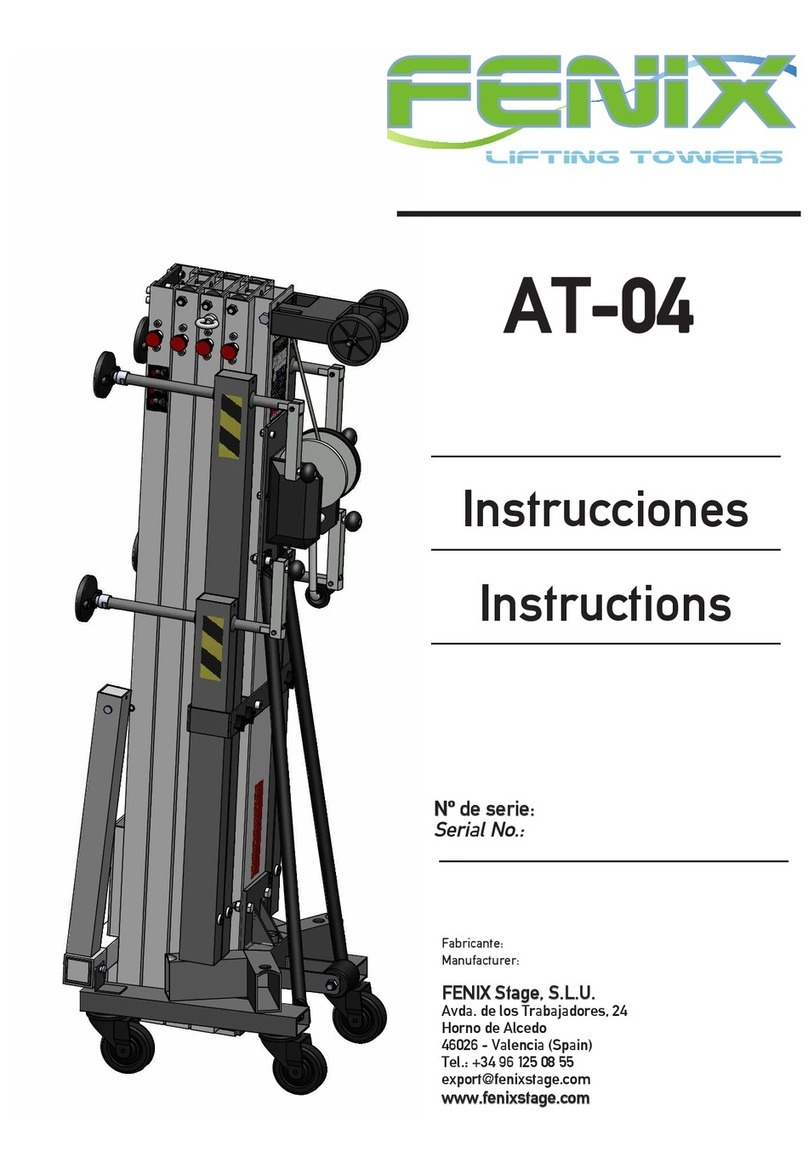
1010
ESPAÑOL
9. En caso de que la torre elevadora se que-
de bloqueada en algún proceso del descenso,
hay dos opciones para intentar liberarla. La
primera siempre será tratar de elevar todos
los perles al máximo para así intentar des-
enredar el cable y desbloquear la torre eleva-
dora. La otra opción será si el problema es
debido a que el péndulo se haya engravado
en alguno de los perles. En este caso, la so-
lución será liberarlo mediante un golpe seco,
utilizando a ser posible, una llave allen en L,
o en su defecto cualquier destornillador. In-
troducir la llave allen en la ranura inferior
del perl (N) que se haya quedado atascado y
golpear el péndulo con un martillo, intentan-
do desbloquearlo y liberar la torre elevadora.
10. Descenso: Para bajar los perles hay que
seguir el orden contrario. El primer perl que
hay que bajar siempre será el más cercano al
cabestrante. Para liberar los gatillos de segu-
ridad (A) hay que elevar ligeramente la carga
con el cabestrante. En la posición normal de
trabajo, el peso de la carga impide liberar los
gatillos de seguridad (A). Una vez liberado el
gatillo de seguridad (A), mover hasta la posi-
ción abierta (T) realizando el paso (U), girar
ligeramente la manivela del cabestrante (B)
en el sentido contrario a las agujas del reloj.
Inmediatamente después, volver a colocar el
gatillo de seguridad (A) en posición cerrada
(S), hasta el nal del tramo. Repetir el mismo
paso sucesivamente hasta que quede comple-
tamente plegada a su altura mínima.
11. Para el transporte hay que bajar todos los
perles y colocar los gatillos de seguridad
(A) en posición cerrada (S). Poner los brazos
de carga (E) en posición vertical y bajar el ca-
rro (X) girando la manivela del cabestrante
(B) ejerciendo un poco de presión sobre el
carro (X). Meter las patas (H) en su sopor-
te para transporte (C) ajustando los pomos
de plástico (V). Asegurar el brazo de carga
(E) poniendo el pasador (L) en la pletina de
transporte (F), jando así el carro (X) para
no sufrir bloqueos del péndulo.
5. MANTENIMIENTO
1. Comprobar periódicamente el estado del
cable. Si un cable presenta rotura de hilos o
aplastamiento, debe ser sustituido inmedia-
tamente por otro nuevo. No utilizar la torre
elevadora con cables en mal estado. Utilizar
solamente cable de acero galvanizado según
EN 12385-4. Carga máxima cable: 2.000kg.
Resistencia a la torsión del cable: 1.770N/
mm². Diámetro del cable: 6mm. Composi-
cion del cable: 6x19+1.
2. La torre elevadora se suministra completa-
mente engrasada de fábrica. No obstante, se
recomienda engrasar periódicamente según
el uso, la corona dentada del cabestrante, la
rosca de la manivela y los tramos.
ATENCION:
NO ENGRASAR NI LUBRICAR EL
MECANISMO DEL FRENO
Los discos de freno, han sido engrasados con
una grasa especial resistente al calor y la pre-
sión. No deben ser utilizados otros productos
para evitar inuir negativamente en el fun-
cionamiento del freno. No es necesario en-
grasar los discos de freno.
3. La torre elevadora AT-04 debe ser compro-
bada por un experto como mínimo una vez
al año de acuerdo con su utilización.
4. Solamente deben utilizarse piezas de re-
puesto originales para garantizar una con-
tinuada seguridad de uso. El usuario pierde
todos los derechos de garantía, si incorpora
otros repuestos que no sean originales o lleva
a cabo cualquier modicación en el produc-
to.
5. Para solicitar cualquier repuesto, contacte
con el fabricante o con un distribuidor auto-
rizado dentro de su territorio.

